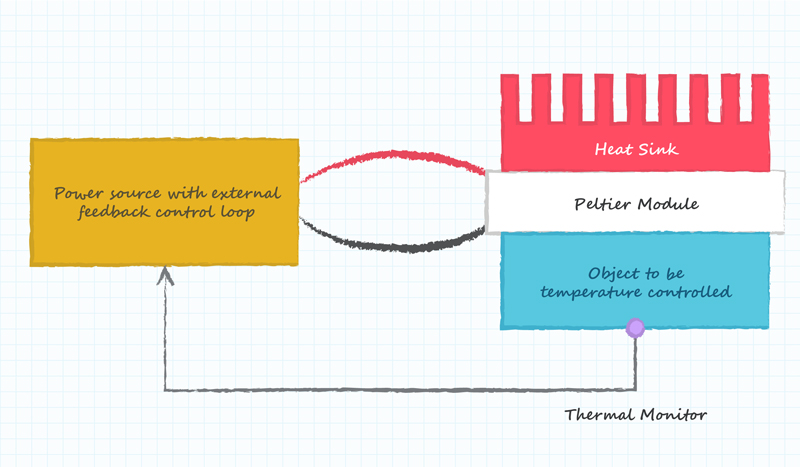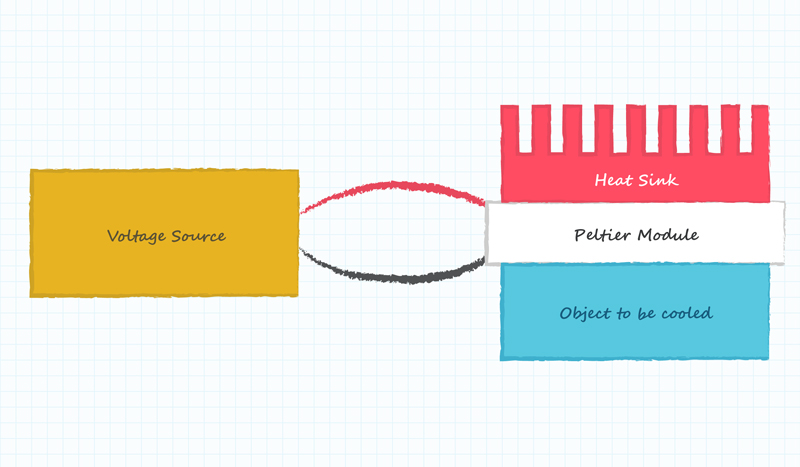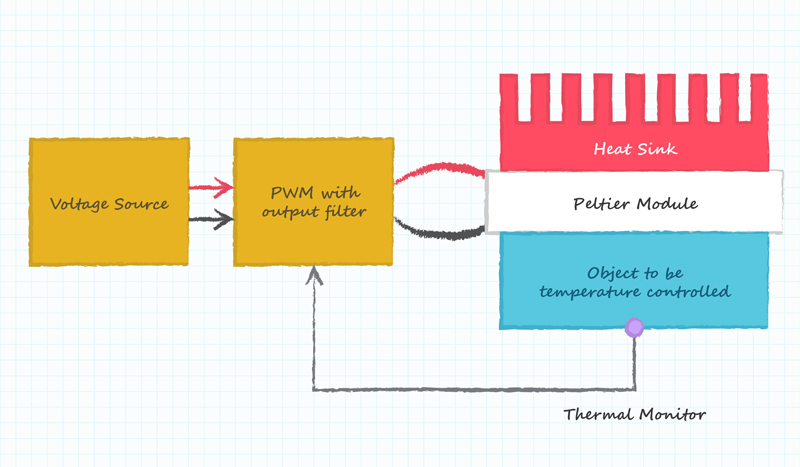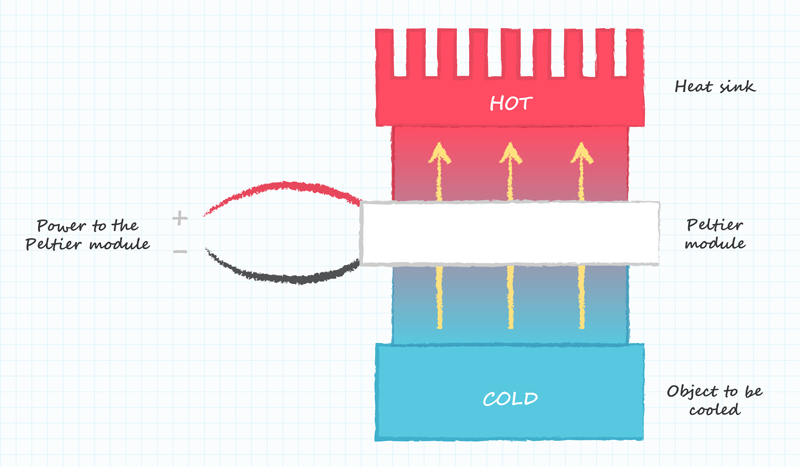How to achieve temperature control with a peltier module system
A Peltier module, also known as a thermoelectric module, is a powerful device for thermal management, for use in applications such as laser products. When a current is passed through the module a temperature differential is created, causing one side to be hot while the other is cold. Depending on the design of the module and the applied voltage and current, a temperature differential over 100°C can be achieved.
By Bruce Rose, Principal Applications Engineer at CUI Devices
As a solid-state device, the module benefits from having no moving parts and can be used in an electronic system for cooling or heating; reversing the polarity of the applied voltage reverses the flow of thermal energy. Designers often employ Peltier modules to cool components such as ICs or power modules, particularly where precise temperature control is needed, or if forced-air cooling is not sufficient. A thermoelectric system can respond quickly to changes in operating conditions and can cool objects to below the ambient temperature if needed.
In a cooling application, the device to be cooled is attached to one side of the Peltier module, and a heat sink is applied to the other (figure 1). As figure 1 also shows, an external power source is needed to provide the current to operate the module.
Closed-loop feedback may be applied, using a temperature sensor at the device to be cooled, to control the supply of power to the module. The heat sink in figure 1 must be sized to handle not only the heat transferred from the attached component but also the heat dissipated due to the electrical current supplied to operate the module.

Figure 1. Main elements of a thermoelectric cooling system.
Designing a thermoelectric system
The thermal requirements of the application determine initial selection of the Peltier element. These include the thermal power to be transferred across the module, the maximum temperature differential and the maximum hot-side temperature. When a suitable module is identified, designers can calculate the current and voltage needed to achieve the desired temperature differential.
Standard ranges of Peltier modules, such as CUI Devices' family of thermoelectric coolers, typically offer designers several choices that will fulfil the application’s thermal requirements with appropriate voltage and current values. CUI’s blog How to Select a Peltier Module presents a more detailed discussion on device selection.
The easiest way to work out how to operate the Peltier module to maintain the desired temperature is first to calculate the current needed in relation to the thermal power to be transferred and the temperature difference across the module. This can be read directly from graphs in the module’s datasheet that plot thermal power versus temperature difference for various values of current. Next, using the datasheet plots for voltage versus temperature difference, the required voltage can be read directly from the graph at the selected current value.
If the indicated voltage is applied continuously without closed-loop control (figure 2), the module will operate at a power transfer level and temperature differential as can be determined from the datasheet.

Figure 2. Constant-voltage operation without temperature feedback transfers at a power level and at a temperature difference as defined in the datasheet.
Closing the loop
If the module is required to cool a device to a specific temperature, the temperature is sensed as shown in figure 1 and the data is fed back to control the voltage or current applied. The temperature sensor can be a thermocouple, solid-state temperature sensor or an infrared sensor.
A pulse-width modulation stage is commonly implemented at the output of a standard power supply, as shown in figure 3, to control the voltage applied to the module. The PWM stage is added externally because many power supply outputs do not allow a wide enough range of adjustment to reach the minimum and maximum voltages needed to control the Peltier module.
A filter is recommended at the PWM output to reduce ripple, which can compromise the module’s Coefficient Of Performance (COP). A maximum value of about five percent ripple is desired as excessive ripple can also cause electrical noise issues in the device being cooled.

Figure 3. Temperature feedback controls the output PWM stage to adjust the applied voltage.
In addition, the thermal feedback-loop bandwidth should be low, which means it can be designed in many ways. Since the polarity of the applied voltage determines the direction of heat transfer (figure 4), a suitable means of reversing the polarity allows the system to either cool or heat the target object.

Figure 4. The applied voltage polarity determines the direction of heat transfer.
Handling self-heating
As mentioned earlier, the Peltier module itself generates heat in addition to the heat coming from the object to be cooled. Therefore, the heat sink must be able to dissipate this self-generated heat in addition to the heat transferred across the module from the cooled object.
If the module is operated at a low COP, which may happen if inadequate power-supply filtering is applied, the thermal power due to self-heating can be greater than the power transferred from the cooled object. The ambient temperature and the heat sink capacity determine the maximum operating temperature of the module and overall system thermal dissipation.
Conclusion
A Peltier module can be an effective tool for controlling the temperature of an object, particularly if the desired set point is below the ambient temperature. As a solid-state device, the Peltier module is typically smaller, lighter and more energy efficient than a conventional thermal-control system containing a compressor and dissipative heater. Electrical and acoustic noise emission is also typically lower.
In addition, a thermoelectric system can operate in any physical orientation, while requiring no special components to design the system. This makes thermoelectric temperature control an attractive option where performance demands are high and space, time and the development budget may be tight.
Further reading
Check out CUI Devices' range of Peltier cooling units.
Read the CUI Devices' Insights blog How to Select a Peltier Module to learn more about choosing the right module for your application.










